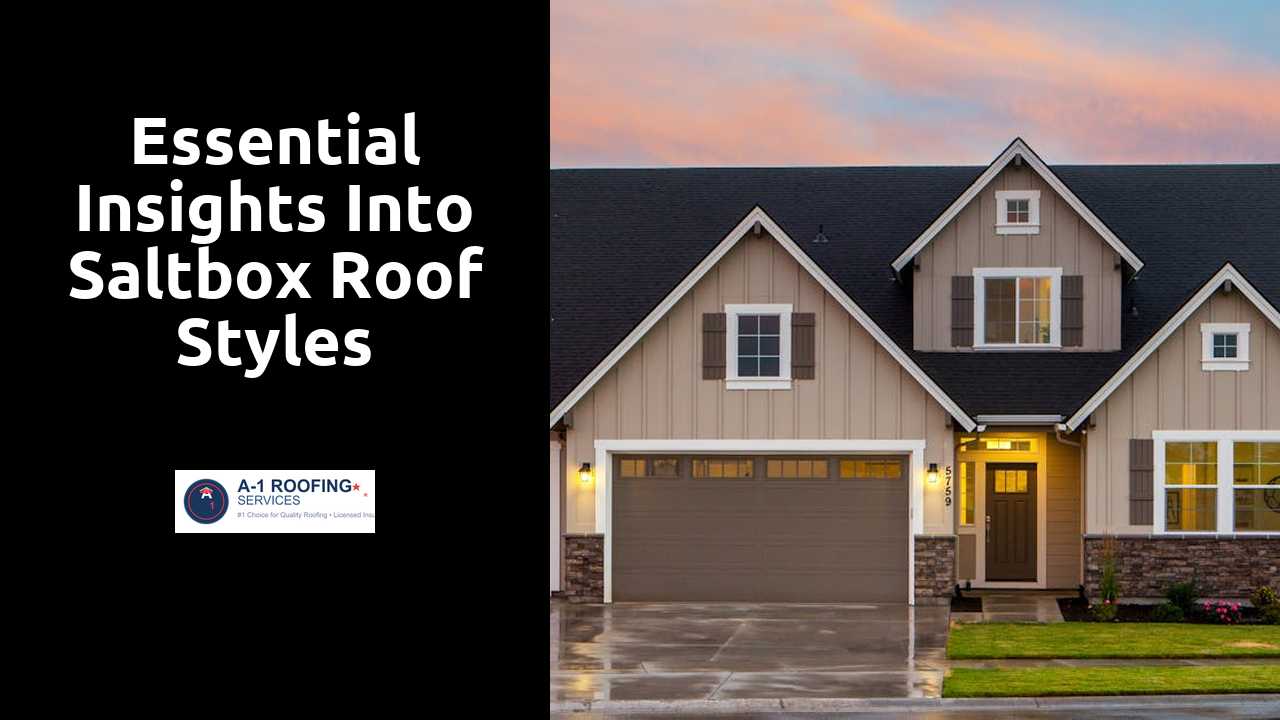
Essential Insights into Saltbox Roof Styles
Table Of Contents
Saltbox Roofs in Modern Architecture
The unique silhouette of saltbox roofs has found its place in contemporary architecture, offering a blend of nostalgic charm and modern functionality. Their asymmetrical design not only enhances curb appeal but also allows for efficient water drainage, making them practical in various climates. Many architects incorporate these roofs into new constructions, adapting the style to complement diverse building materials and aesthetics.
As energy efficiency becomes a priority in modern design, saltbox roofs can contribute significantly to minimizing heating and cooling costs. The sloped roof design can accommodate larger windows on one side, allowing for increased natural light and passive solar heating. This adaptation highlights the roof style’s flexibility, proving that traditional forms can be effectively merged with cutting-edge sustainability practices.
Discover more here.
Contemporary Adaptations
Many architects today find innovative ways to incorporate saltbox roofs into modern designs. This traditional style is often reimagined with contemporary materials like metal or sustainable composites, allowing for a unique blend of old and new. The asymmetrical shape, characteristic of the saltbox design, is still preserved while being paired with minimalist aesthetics. Such features often include large windows or sleek siding, creating striking contrasts that appeal to modern sensibilities.
Some homeowners also choose to modify the classic form to better suit their needs. This may involve altering the pitch for increased energy efficiency or utilizing green roofing techniques to enhance sustainability. The integration of outdoor living spaces, like terraces and patios, often accompanies these adaptations, expanding the usable area while maintaining the roof's original charm. This approach not only respects the architectural heritage but also aligns with contemporary lifestyle demands.
Maintenance Tips for Saltbox Roofs
Regular inspections are vital for maintaining the integrity of a saltbox roof. Look for signs of damage, such as missing shingles or cracks in the roofing material. Keeping gutters clean and free of debris prevents water buildup, which can lead to leaks and structural issues. Additionally, evaluating the flashing around chimneys and vents is important, as these areas are prone to wear over time.
Proper ventilation plays a significant role in extending the life of a saltbox roof. Ensuring adequate airflow helps prevent moisture buildup in the attic space, reducing the risk of mold and mildew. During the changing seasons, it is helpful to check for any loose tiles or shingles that may have shifted due to wind or weather conditions. Timely repairs can save homeowners from more costly damage in the future.
Best Practices for Longevity
Regular inspections play a crucial role in prolonging the life of a saltbox roof. Homeowners should schedule these checks at least twice a year, focusing on signs of wear and damage. Roof shingles may loosen or become damaged over time due to weather conditions. Identifying issues early can prevent more extensive repairs down the line. Clearing debris, such as leaves and branches, from the roof helps maintain proper drainage. This step reduces the risk of water pooling, which can lead to leaks and structural damage.
Proper ventilation is also essential for maintaining the integrity of a saltbox roof. Adequate airflow prevents moisture buildup, which can result in mold and rot. Installing vents or using ridge caps can facilitate airflow. Additionally, ensuring that insulation is well-installed can contribute to temperature regulation within the attic space. This practice minimizes the risk of ice dams forming in colder climates, further protecting the roof’s materials. Taking these proactive measures ensures both longevity and performance of the roofing structure.
Cost Considerations for Saltbox Roofing
When planning for a saltbox roofing project, understanding the overall costs is crucial. The expense can vary widely based on factors such as materials, labor, and the size of the structure. Asphalt shingles tend to be the most economical option, while premium materials like slate or standing seam metal can significantly increase the budget. Homeowners should also account for any necessary structural modifications to accommodate the unique shape of the roof, which may add to the overall expense.
Installation costs are often influenced by geographic location. Regions with a higher cost of living will typically see increased labor charges, making it essential to obtain multiple quotes from qualified contractors. Additionally, unforeseen challenges during the installation can lead to budget overruns. Preparing a detailed budget that includes contingencies for these potential issues can help manage expenses effectively.
Budgeting for Installation
When considering a saltbox roof installation, understanding potential costs is crucial. The overall price can vary significantly based on several factors, including the materials chosen. Asphalt shingles tend to be more budget-friendly, while slate and metal options may elevate the project’s cost. Geographic location can also influence pricing due to labor rates and availability of materials.
It is important to account for both direct and indirect expenses. Hiring a qualified contractor can add to the budget but ensures quality workmanship. Homeowners should also consider additional components such as insulation, underlayment, and flashing, which may increase the overall expense. Accurate initial estimates can help in planning and financing this architectural feature effectively.
Related Links
Evaluating the Functionality of Dome Roofs in Residential ProjectsWhy Choose a Butterfly Roof for Your Next Build